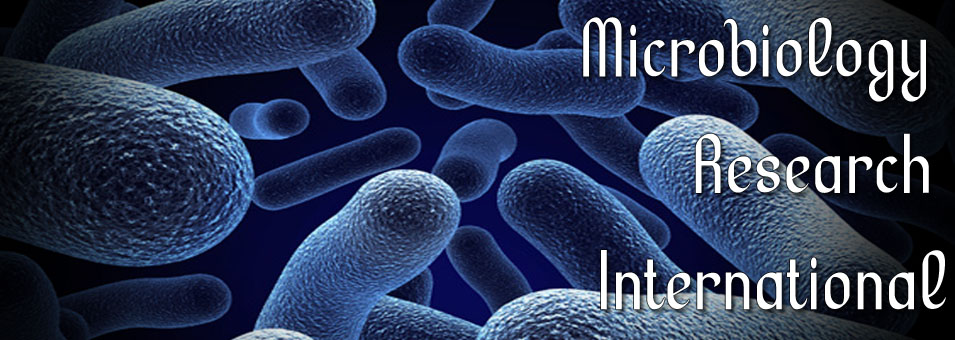Biostimulation potential of some agro-wastes in the remediation of crude oil-polluted freshwater
Faith Nnenna Woji-John, Ugboma C. J. and Sampson T.Microbiology Research International
Published: October 29 2024
Volume 12, Issue 4
Pages 147-162
Abstract
Crude oil pollution has become a significant problem, particularly because it disrupts the biotic and abiotic components of aquatic environments. This study investigated the bioremediation potential of certain agro-wastes in the remediation of crude oil-contaminated freshwater. A sample of crude oil-contaminated water was collected in a sterile container from Adobi community in Odagwa, Etche Local Government Area, Rivers State. Pineapple and watermelon peels, which were dried and ground into powder, served as organic supplements, while NPK fertilizer was used as the inorganic supplement. Physicochemical parameters were analyzed using standard methods, and the hydrocarbon-utilising and total heterotrophic bacterial loads were determined through standard plate counts. Isolated bacteria were identified phenotypically. The experiment involved eight treatments, including a control, in 1500 mL conical flasks. Pineapple, watermelon peels, and NPK fertilizer were used as supplements, and the experiment lasted for 70 days. The total heterotrophic bacterial count in the habitat water profile was 1.7 × 10⁶ CFU/mL, while the hydrocarbon-utilising bacterial count was 1.5 × 10⁵ CFU/mL. The hydrocarbon-utilising bacteria isolated from the sample included Pseudomonas sp., Alcaligenes sp., Bacillus sp., Cedecea sp., and Flavobacterium sp. Baseline physicochemical parameters included a pH of 5.49, temperature of 28.3°C, dissolved oxygen of 2.31 mg/L, turbidity of 165 NTU, total dissolved solids of 51 mg/L, electrical conductivity of 102.1 µS/cm, total suspended solids of 3.05 mg/L, biological oxygen demand (BOD) of 26.67 mg/L, total organic carbon of 2.66 mg/L, nitrate of 2.04 mg/L, and phosphate of 6.7 mg/L. The total petroleum hydrocarbon (TPH) was 354.87 mg/L. The changes in hydrocarbon-utilising bacteria (HUB) counts were as follows: Day 1 (7.0 × 103 – 3.9 × 104 CFU/mL), Day 14 (2.7 × 105 – 1.4 × 106 CFU/mL), Day 28 (1.2 × 104 – 1.2 × 106 CFU/mL), Day 42 (6.5 × 104 – 2.9 × 105 CFU/mL), Day 56 (3.5 × 104 – 2.4 × 105 CFU/mL), and Day 70 (5.8 × 105 – 2.9 × 105 CFU/mL). No significant differences (P > 0.05) were observed in the HUB and THB counts across treatments. During bioremediation, physicochemical parameters ranged as follows: pH (3.81–6.87), BOD (6.61–19.88 mg/L), nitrate (0.15–4.31 mg/L), and phosphate (0.30–1.44 mg/L). The concentrations of nitrate, phosphate, and potassium increased in the nutrient-supplemented samples on the first day but declined over the bioremediation period. The reduction and percentage reduction of total petroleum hydrocarbons were as follows: NPK (2032 ± 0.7 mg/L; 57.2%), Pineapple (2006.45 ± 0.1 mg/L; 53.3%), and Watermelon (2325.6 ± 0.1 mg/L; 40.8%). The individual supplements outperformed the consortiums. Using nutrients to stimulate indigenous bacteria is highly recommended due to its efficiency.
Keywords: Bioremediation, agro-wastes, crude oil, freshwater.
Full Text PDF
